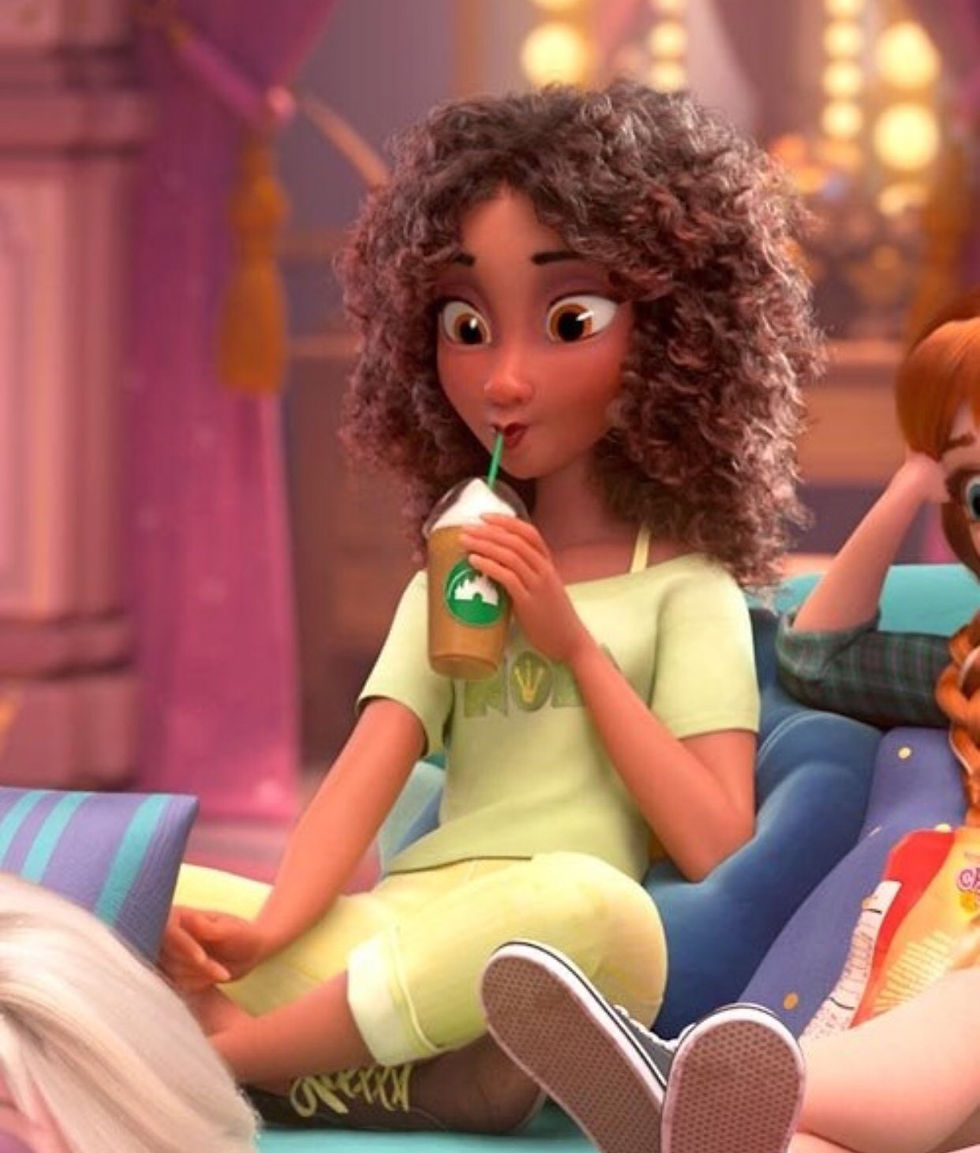Reflections on Disney's BIPOC Princesses—Meagan Harmon, Guest Blogger
- Cramer & Del George

- Jun 8, 2021
- 3 min read
Updated: Jul 22, 2021

Today we share a post by a student in our Spring 2020 Introduction to the Fairy Tale course.
My name is Meagan Harmon and I’m currently a student at Santa Monica College. I was born and raised in Los Angeles, California, and I love traveling around the world to learn more about various cultures and traditions. I was introduced to the Disney fairy tales as a child, but it wasn’t until I enrolled in English 61: Introduction to the Fairy Tale that I was introduced into the older versions of fairy tales.
To me, personally, the diversity within Disney fairy tales should’ve occurred much sooner. Don’t get me wrong, I’m beyond grateful for the BIPOC representation among the Disney Princesses and diversity being displayed in general, but BIPOC and minorities shouldn’t have had to wait around to see someone who looks like them or sounds like them being represented on the big screen. In addition, the portrayals and storylines of some BIPOC fairy tales are still a little iffy and controversial:
For example, Princess Jasmine in Aladdin (1992)--the first non-white Disney Princess--is voiced by a white actress by the name of Linda Larkin, who was actually instructed to lower her voice for the role. The film has also been criticized for employing stereotypes of the Middle East and Asia.
Pocahontas is the second non-white Disney Princess and the film Pocahontas was released in 1995. This film has since received criticism for being extremely problematic. It first depicts Pocahontas as an adult, when in reality, she was around 12 or 13 during the time the film portrays. The real Pocahontas was said to be kidnapped and forced to marry her husband, John Rolfe. Disney filmmakers changed the tale because the real story was too “violent and complicated”. The filmmakers also “declined to consult the Powhatan Renape Nation, according to Chief Roy Crazy Horse, who roundly criticized the film for its inaccuracies.”
Mulan is the third non-white Disney Princess. The film Mulan (1998) has received both praise and criticism. For children, it comes off as empowering for women, but for adults of Chinese descent, it comes off as insensitive. Mulan plays into Chinese stereotypes and also for some, it represents how (1) women can only be powerful when disguised as men and (2) how women can’t be in the military because men will become sexually attracted to them. It’s also worth noting that the new live action Mulan (2020) received massive backlash for their choice in filming location and with the actress playing Mulan.

Next Up, Tiana from The Princess and the Frog (2009). I have to commend Disney for making a step in the right direction with black diversity. I have to say, I absolutely love the representation. It is accurate and real. I can see Tiana in myself. However, it’s Disney, so expect controversy. When the trailer for Wreck It Ralph 2 (2018) came out, Tiana received a new look and Disney managed to whitewash her. They made her lips smaller, nose narrow, skin lighter and had her hair in loose curls instead of the kinky way
black hair naturally looks. Fans went to social media to express their outrage and even the actress, Anika Noni Rose, who voiced Tiana in The Princess and the Frog spoke up to the Disney filmmakers. Thankfully, Disney did make a step in the right direction by redesigning Tiana in the final cut of Wreck It Ralph 2.
The fourth non-white Disney Princess is Moana, who’s Polynesian. I personally have only seen clips of Moana (2016), but I’ve encountered nothing but love for her on social media, so I believe Disney definitely represents Polynesian culture and tradition in the right way. The Disney Studio actually reached out to Pacific Islanders and created a team of scholarly and cultural advisors to develop the project. It seems the corporation learned lessons from the previous controversies and took steps to be more culturally sensitive.
The final Disney Princess who is non-white is Raya from Raya and the Last Dragon (2021). Raya is the first Southeast Asian Disney Princess. I, again, have yet to watch this film, but from the clips I’ve seen online and from posts on social media, I believe that Disney is finally getting on the right path with representation.
I’m glad that BIPOC representation is becoming the norm in Disney films. I know how much I appreciated Tiana, so I can only imagine how it must feel to be a child of Arab, Chinese, Polynesian or Southeast Asian descent.



Very interesting! I wasn't familiar with many of these films. Thank for this comprehensive, yet succinct, review.